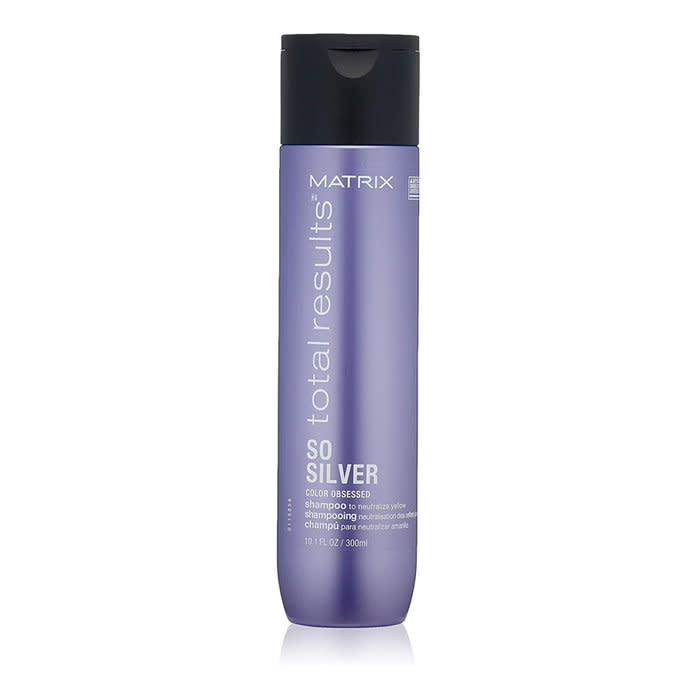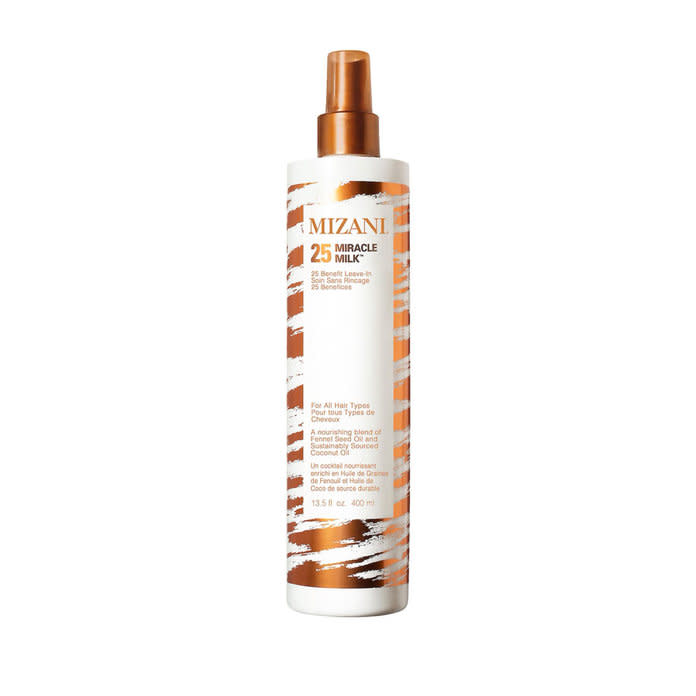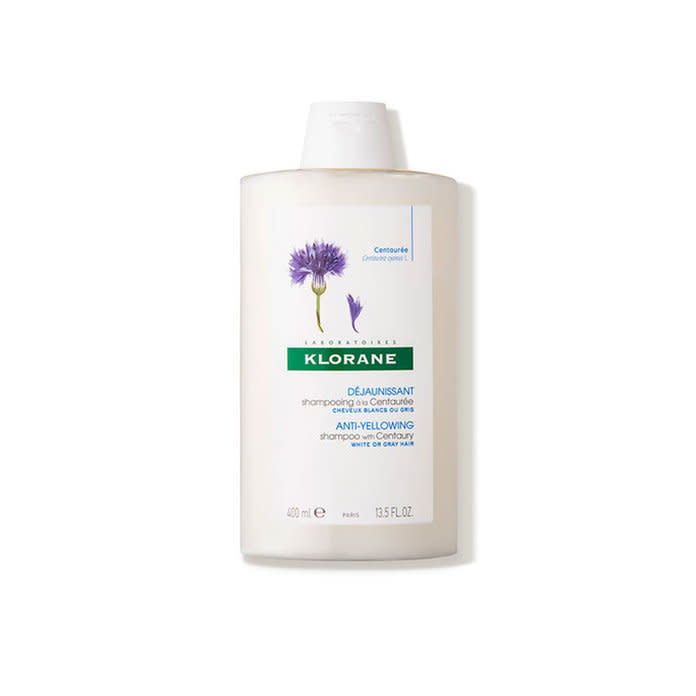So, You're Ready to Transition to Full-On Gray Hair
Going gray doesn't just happen with the quick snap of your fingers.
The transition begins when you notice your first stray white strand sticking out of your full head of colored hair. With time, the silver hairs will continue to grow and multiply. And eventually, you'll get to a point where you'll have to make a choice: either wait until your roots fully grow out and cover up the decimation line with box dye or root concealer, or transition to full-on gray hair.
For anyone who's over growing out their hair to fully get to gray, you may want to consider dyeing your remaining colored hair to match the silver shade that's growing out of your roots.
"If you color your hair it can lower you maintenance, save you time, and maybe give you a sense of freedom in your beauty routine," says Sunnie Brook, celebrity hairstylist and Biolage brand ambassador. "It can also change your complexion and compliment features in a new way."
RELATED: I Embraced My Gray Hair — But No One Else Did
Another bonus? Gray hairs are naturally voluminous. "Natural gray hair strands are usually thicker and coarser than hair that has pigment in it, so you’ll notice your hair will feel thicker as gray hair grows out," says Priscilla Valles, celebrity hairstylist and Clairol color partner.
Whether your colorist is going to help you dye your hair silver or you plan on taking the transition into your own hands, here's what you need to know about going full-on gray.
How to Transition to Gray Hair At the Salon
Brook recommends asking your colorist to switch to using a semi-permanent dye on your hair. "My clients that want to transition to wearing their — what I like to call 'sparkles' more visibly — I suggest switching from a permanent color to a semi-permanent," she says. "This will still give you some coverage with a softer grow-out line. It is not full coverage, but delivers pigment onto the strand and will help them grow out their sparkles."
For hair that has a fair amount of grays, Brook suggests asking for threaded highlights for a more natural blend blend between the colored and silver strands. "For those clients not sure if they are ready to grow out their gray, sometimes we will start the grow out process underneath," she explains. "We will keep blending the area around the hairline and part that are most visible, but underneath we will let those areas grow out."
Dyeing your hair blonde is another option. Valles says to tray an ashy shade. "If your hair color is light, the contrast of your silver roots will be less noticeable when they grow out," she shares.
RELATED: The 5 Questions Everyone Asks About Going Gray
How to Dye Your Hair Gray At Home
Transitioning to gray hair at home is possible with the right products.
Instead of using a permanent boxy dye, look for a formula that's demi-permanent like Clairol Natural Instinct.
"The demi-permanent color doesn’t cover 100% of grays like a permanent color does, so your hair will look more blended, but it won’t have the harsh root line where you’re growing it out," Valles explains. "You can use it as your hair grows out, and it will fully wash out once your hair has grown enough to fully embrace the gray (no need to avoid coloring while it grows!)."
The formula's nourishing coconut oil and aloe vera is an added bonus.
Clairol Natural Instinct

To buy: $8; ulta.com.
When choosing a box dye, Brook says to stick with your natural or current hair color. "You want to avoid ashy color or warm tones and pick a neutral — especially if you are retouching the roots," she says. "This area of hair should look neutral and a little bit darker than the rest of your hair for a more natural blend."
If you aren't up for messing with dye on your own or ready for a professional to permanently color your hair, a temporary root touch up product like Color Wow's cult-favorite Root Cover Up can soften the decimation line between your silver roots and the rest of your hair.
Color Wow Root Cover Up

To buy: $35; target.com.
Another important factor to consider is that gray hair is more high maintenance. "You will have to color your hair about every four weeks to refresh your gray color," Valles shares. "If you’re sporting a natural semi-permanent color until your gray fully grows out, after about two weeks you will begin to get a shadow of a root."
Luckily, if you don't feel like dyeing your hair that often, there's always temporary root concealers or you can wash your hair with a purple shampoo to cut brassiness and brighten your grays. Brook is a fan of Matrix Total Results So Silver Shampoo.
Matrix Total Results So Silver Shampoo

To buy: $14; ulta.com.
How to Care for Your Newly-Gray Hair
On top of adjusting to having gray hair, you'll also have to tweak your haircare routine, too. Gray hair typically tends to be more dry and coarse, and the products you use should reflect this change in texture.
A hydrating leave-in conditioner will soften the hair cuticles and boost shine, which will make your silver tones sparkle. Mizani's spray works across all hair types and offers heat and frizz protection, too.
Mizani 25 Miracle Milk Leave-In Conditioner

To buy: $34; sephora.com.
While purple shampoo is great to use once or twice a week to cut out warm, brassy tones, your daily shampoo should brighten your gray hair and prevent it from getting yellow. This Klorane formula checks off both boxes, plus it adds body to dry, course hair.
Klorane Anti-Yellowing Shampoo with Centaury

To buy: $20; dermstore.com.
This is Winging It, where we're helping you master your favorite salon treatments and looks without having to leave the house.
